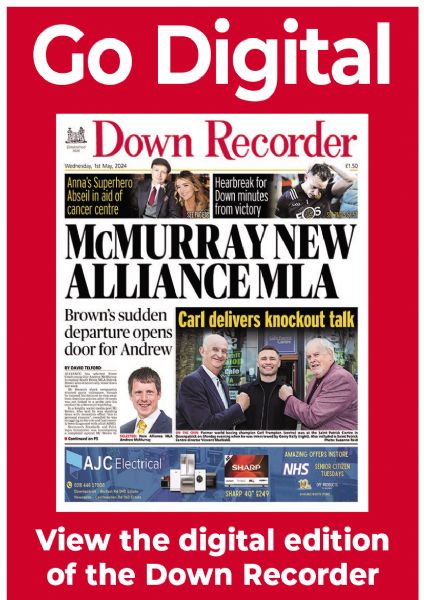Rally driver’s drowning warning to organisers
Rally driver’s drowning warning to organisers
25 May 2016
A CORONER has advised rally organisers to give serious attention to the risk of holding events near water after the death of a driver near Castlewellan last year.
Coroner Brian Sherrard made his comments at the end of an inquest into the death of rally driver Ryan Bradley, from Coleraine, who died after his car plunged into Lough Island Reavy in October 2014.
Twenty eight year-old Mr Bradley had been competing in the Down Rally when his car left the road on stage one of the rally which ran close to the deep water of the reservoir.
After Ryan set off with his navigator, Gerard Mullan, his blue Ford Escort somehow lost control while tackling a right-hand bend, then entered the reservoir.
The car quickly filled with water, soon sinking more than three metres. Mr Mullan managed to escape, but Ryan became trapped and was unable to flee the vehicle.
Emergency services arrived on the scene within minutes, but Ryan’s car was submerged and could not be reached.
At Belfast’s Laganside court complex on Friday, Mr Sherrard recorded the cause of death as drowning.
During the inquest Mr Bradley brother, Kevin, who had also been competing in the rally, told of the moment he realised his brother had died.
Kevin was also competing and completed stage one of the course first. Before starting his own effort, Kevin helped Ryan change his car tyres. It was the last time he would see him alive.
During the hearing, Kevin said Ryan, an engineering graduate from Ulster University, was “a very likeable character who was always smiling”.
He also told how both shared a love of rally driving and were looking forward to competing in the Down event for the first time.
Kevin said that on the morning of the race, he was concerned that there was no formal safety briefing and he was previously unaware that the route ran so close to the lough.
Shortly after he completed his first stage, he learned Ryan had been in an accident when a colleague called him and told him not to continue.
Before long, he was given the devastating news that his brother’s car had entered the water and that Gerard Mullan had been taken to hospital. Kevin said he told police officers, “You don’t need to confirm anything to me — the car’s at the bottom of the lough and Ryan’s still in the car and Ryan is dead”.
Stunned by the news, Kevin’s first thought was to tell his parents, Sharon and Joe Bradley. “I found out that ma was at the last junction and could not get up, so I ran back down to be with her,” Kevin said.
“I just shook my head from side to side and said, ‘Ma he’s gone’. I said to her that he was in the water and she kept saying, ‘No, Kevin, not water’.”
Before long police had no choice but to treat the emergency as a recovery rather than a rescue. But it was four hours before specialist divers were able to recover a body.
During the inquest, Ryan’s tearful parents and sister, Bronagh, supported one another while listening to the evidence. They were joined by his former navigator Mr Mullan.
Dr Peter Ingram, who carried out the post mortem, said there was little emergency services could have done to save Ryan.
He added that becoming submerged in freshwater caused drowning within minutes, and that there was a much lower chance of resuscitation compared to saltwater drowning.
Lindsay McCormick, a forensic expert from the PSNI, said the victim’s car was in good condition before the crash and there were no adverse conditions.
In his ruling, Coroner Sherrard explained that Ryan had “failed to successfully negotiate a right-hand bend on the road, left the carriageway and entered the adjacent deep water”.
“There is no evidence of any pre-existing defect in vehicle or carriageway to account for the movement of the car,” he said.
“I’m satisfied that Mr Bradley was beyond assistance after a very few minutes in the reservoir, and I formally find that Ryan’s death was due to freshwater drowning.”

